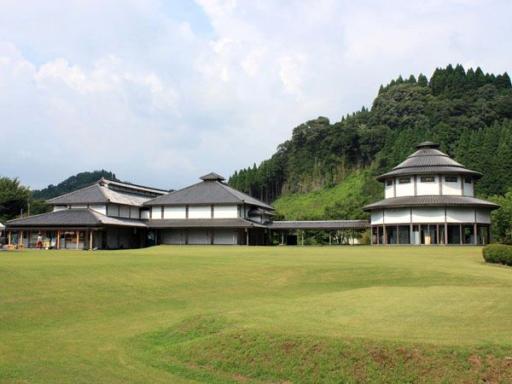
Tsujunkyo Bridge is Japan’s largest stone-arch aqueduct bridge, and it was constructed in 1854 by a local official Yasunosuke Futa in Yabe. The structural purpose was to supply water to the Shiraito Plateau where people suffered from water shortage at that time. The supply of water comes from the upper stream of the Sasahara River about 6 kilometers away. The total length of the water passage is approximately 30 kilometers, and the irrigated area covers an extensive, 100 hectares.
The bridge is capable of pouring out 15,000 square meters of water in 24 hours, if needed to irrigate the surrounding paddy fields. The recipient of the National Cultural Property in 1960 is well known for its water release during the Hassaku Festival. The length of the water passage is 126 meters; and the bridge measures at 75.6 meters in length, 6.3 meters in width, and 20.2 meters in height. The radius of the arch is 27.6 meters.

Located within the Seiwa Bunraku-mura Roadside Station, Seiwa Bunraku-kan is a theater for traditional Seiwa Bunraku puppetry, an art that has been p…

Reitaikyo Bridge is a 90-meter stone bridge over the roughest part of the Midori River. It is one of the largest single-arch bridges in Japan. Built …

Heitate Jingu Shrine is gathering attention as a spiritual spot and has a cypress tree which is said to be 15,000 years old.

You can experience and learn all about dairy farming at the Aso Milk Farm. On this 330,000㎡ farm (81.5 acres), they offer various hands-on farm-life…

Matsuoka Green Farm Yamato is a farm that grows vegetables such as tomatoes and spinach by natural cultivation, taking advantage of the cool climate …

This spot is a favorite for those looking to savor fresh sweetfish (ayu) from the Midorikawa River. Whether it's sashimi, grilled with salt, or the s…

The building of this restaurant is an old house, which is about 200 years old, where you can enjoy local specialty called Dengaku, a kind of barbeque…

Kusasenri Coffee Roastery is a cafe located in front of Kusasenrigahama, one of Aso's most famous tourist destinations. Coffee Gallery, a popular caf…